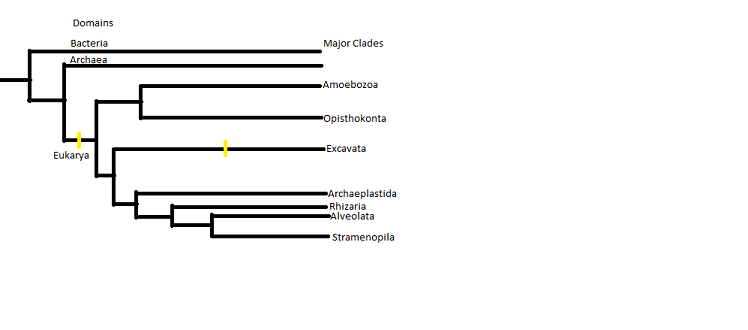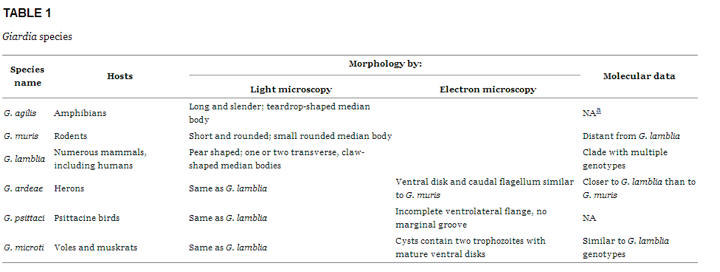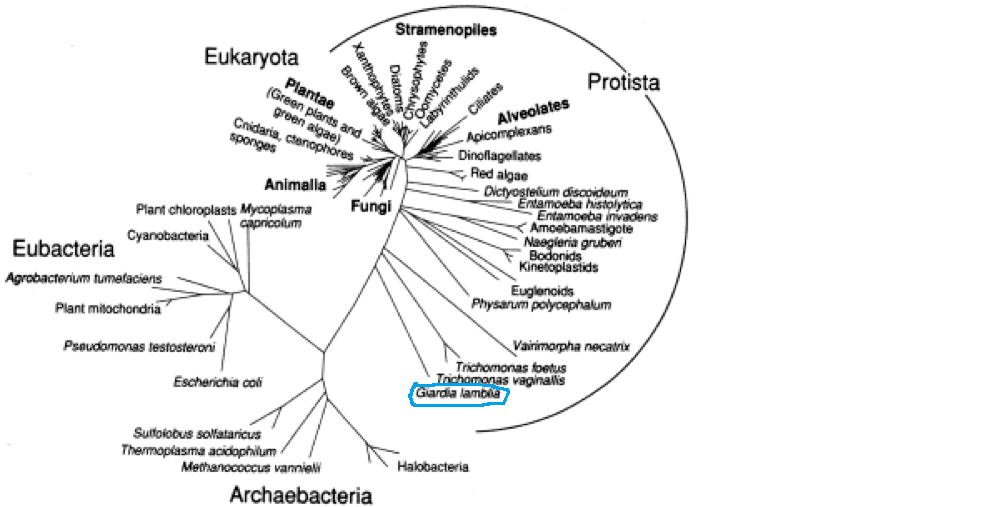Classification
Giardia lamblia, also known as traveler diarrhea, or
beaver fever, is a unicellular parasite that is found in the
fecal matter of infected mammals. Initially found by Van
Leeuwenhoek in 1681 after studying his own fecal matter,
Giardia lamblia was named after Alfred Mathieu Giard
because of his lasting research on the parasite (Clinical
Microbiology Review 2001). Below
is a breakdown of the domain, kingdom, phylum, class, order,
family, genus, and species, in order to better your
understanding of this organism.
Domain: Eukarya
Identified as a member of the domain Eukaryote due to possessing
(two) true nuclei, as well as a nuclear membrane.
Kingdom: Protista
All members of this kingdom are eukaryotic and contain most
commonly unicellular organisms; although there are multicellular
organisms that do fall into this kingdom such as algae, a major key
of this kingdom is the aquatic environment that is needed to
survive.
Phylum: Sarcomastigophora
Organisms that fall into the phylum Sarcomastigophora are
categorized as being flagellated, and are usually 10-20
micrometers in size. (Contain either free-living or parasitic
protozoan. )
Class: Zooflagellates
Also called “zoomastigophora” which is translated into
“whip-bearing animal” in Latin. Main characteristics of this
class are how organisms move through the use of one or more
flagella.
Order: Diplomondida
The order Diplomondida contains mostly parasitic organisms.
These organisms don’t possess a mitochondria or Golgi apparatus,
but instead contain mitosomes, which involve the growth of iron
sulfur proteins.
Family: Hexamitidae
Being identified as having six or eight flagella, these
organisms contain two true nuclei. Organsisms of this family are
also bilaterally symmetrical.
Genus: Giardia
The genus Giardia contains anaerobic parasites that feed off of
and reproduce in the small intestine of humans and other
mammals. These organisms have two stages of life, one in which
it is a swimming trophozoite and the other in which it is a cyst
feeding off the host organism.
Species: Giardia lamblia
The species Giardia lamblia are most commonly
associated with the disease giardiasis, which causes horrific
cases of diarrhea in mammals. This species is found most
commonly in contaminated water supplies around the world,
usually in third-world countries. Giardia lamblia can
be distinguished from other Giardia species because of the two
vertical adhesion disks on the top of the organism. These disks
allow the organisms to attatch to the hosts small intestine and
retain nutrients from the host. The name Giardia lamblia
literally means flagellated protozoan.
Table 1. Showing a brief overview of the different types of Giardia.
Figure 1. Tree diagram showing the emphasis of Protista diversity in the Eukaryota domain.
 Figure
2. Phloygenetic tree showing the three domains of life followed by
the seven major clades.
Figure
2. Phloygenetic tree showing the three domains of life followed by
the seven major clades.
As you can see in Figure 1, Giardia lamblia (circled in blue) belongs to the domain Eukarya, because of its previously mentioned two nuceli and nuclear membrane. As well it is part of the diverse Kingdom Protista, which contain organisms that are mostly unicellular and live in aquatic environments. Feel free to check out other organisms belonging to the Eukarya: Eurycea lucifuga (cave salamander), Maiacetus innus (good mother whale), and Choloepus didactylus (two-toed sloth).
Figure 2 shows the seven major clades included in the Eukarya. Giardia lamblia belongs to the major clade Excavata, sharing the characteristics of lack of a classic mitochondria, and two or more flagella. Here are some examples of organisms from the different clades; Opisthokonta: Panthera tigris sumatrae (sumatran tiger), Cassipoea xamadchana (upside-down jellyfish), Excavata: Naegleria fowleri, Archaeplastida: Bromus tectorum (cheatgrass), Plagoiobothrys nothofulvus (popcorn flower), Alveolata: Pyrocystis fusiformis, and Stramenopila: Noctiluca scintillans (sea sparkle).

